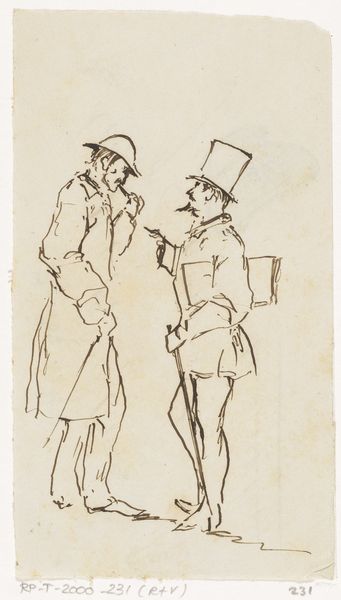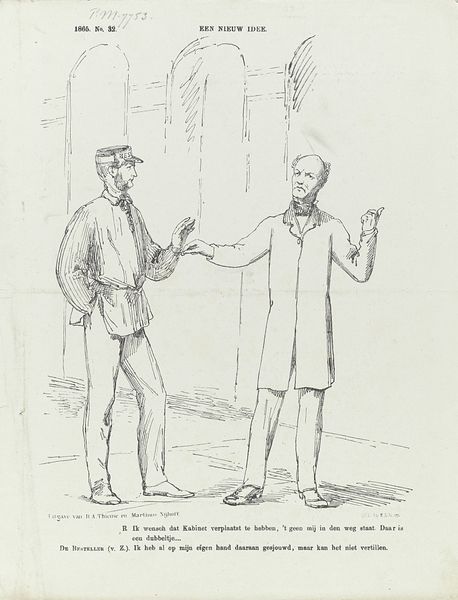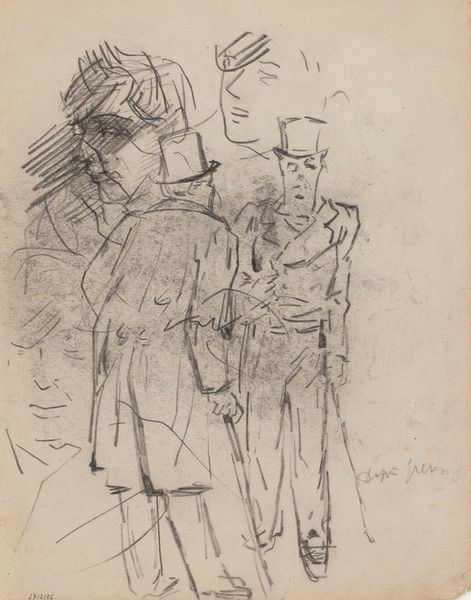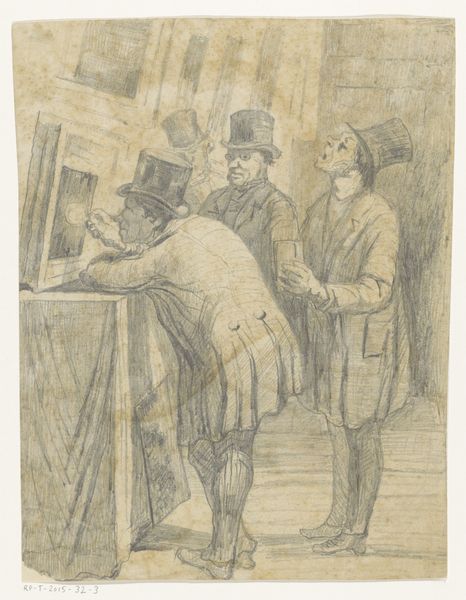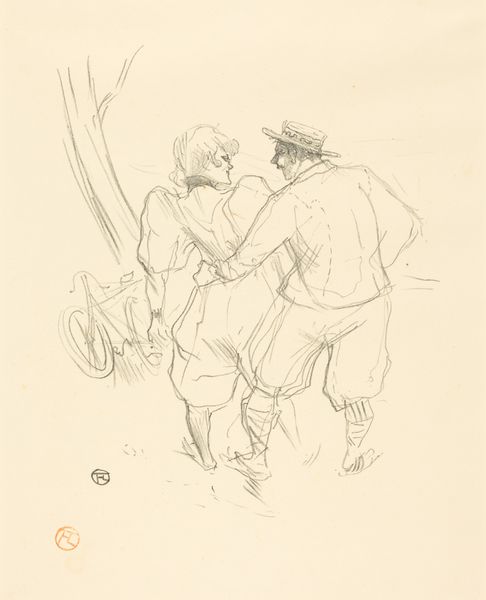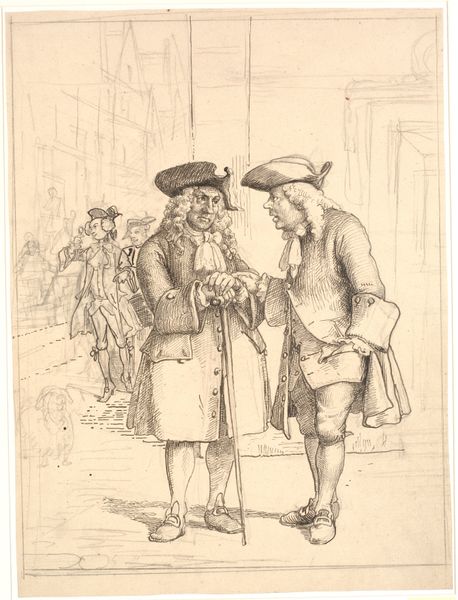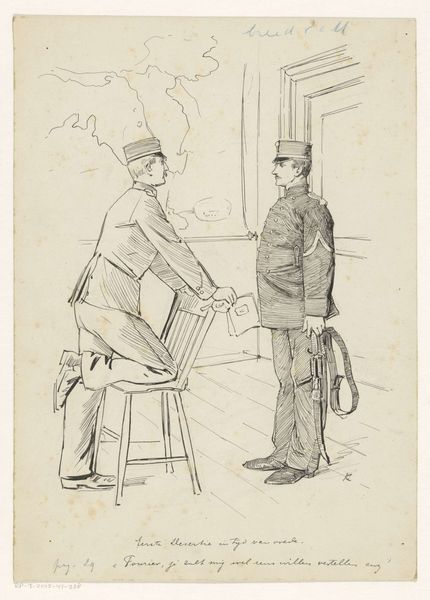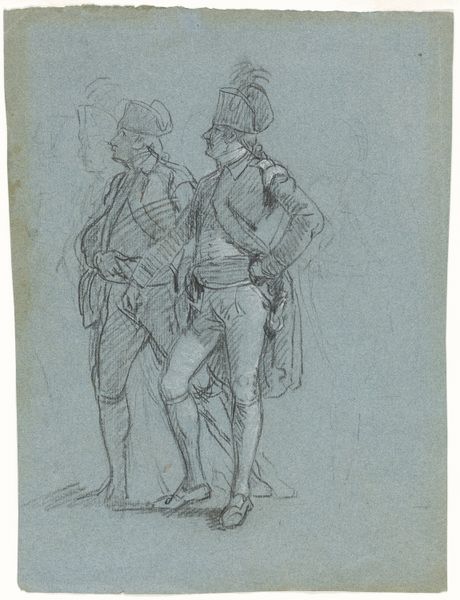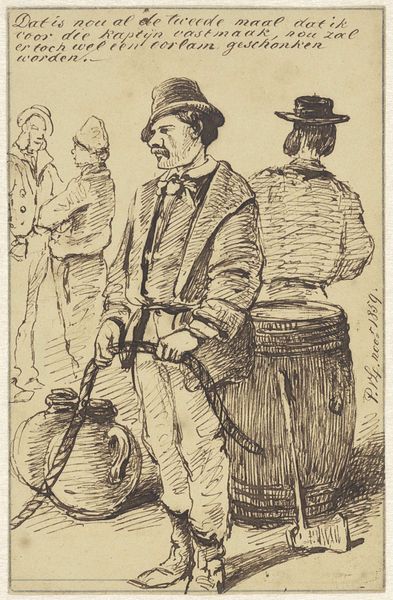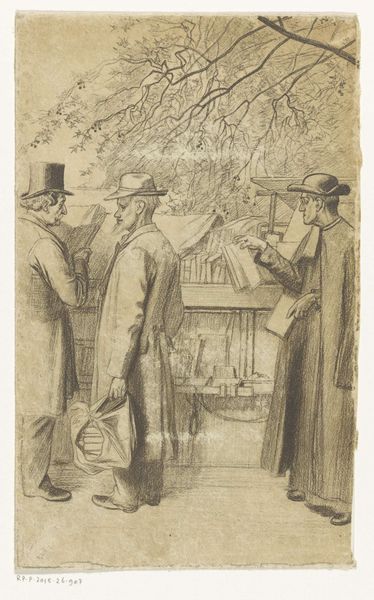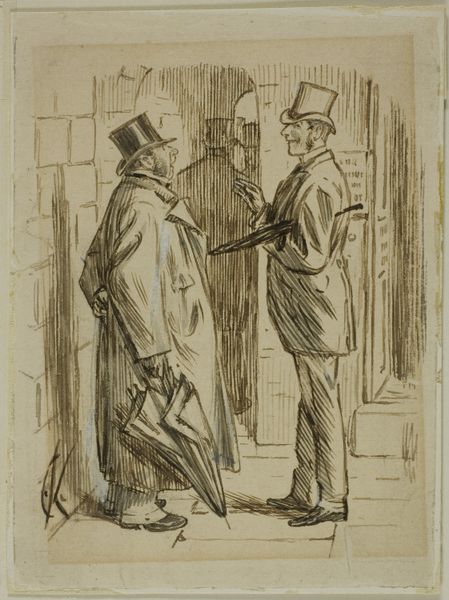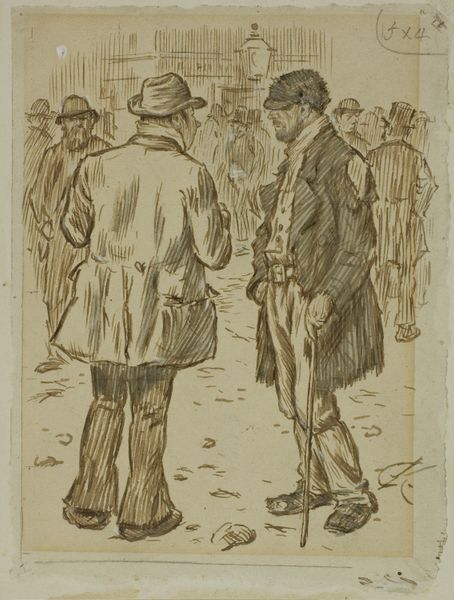
drawing, pencil
#
portrait
#
drawing
#
imaginative character sketch
#
quirky sketch
#
pen sketch
#
sketch book
#
personal sketchbook
#
sketchwork
#
romanticism
#
pen-ink sketch
#
pencil
#
sketchbook drawing
#
genre-painting
#
storyboard and sketchbook work
#
sketchbook art
Dimensions: 163 mm (height) x 130 mm (width) (bladmaal)
Curator: Here we have "Ladegaardslemmer," a pencil drawing by Wilhelm Marstrand, created sometime between 1810 and 1873, now housed at the SMK. Editor: It's charming. A very loose, almost frenetic sketch with a sense of humor, wouldn't you say? The two figures, the wonky trees... Curator: Indeed. Marstrand was a master of genre painting, depicting everyday scenes, often with a moral or satirical edge. This drawing seems like a preliminary study. Note how the characters, likely paupers, are given distinct, somewhat caricatured features. What does that suggest to you, given the era? Editor: The roughness speaks to its function as a preparatory study. Look at the marks – the quick hatching creating depth. These were likely very affordable materials and perhaps even created on location. How would such depictions of working-class subjects have been received? Curator: Marstrand, despite his Realist tendencies, moved in established artistic circles. So the drawing could both critique social inequalities while simultaneously reinforcing them. He exhibited in the Charlottenborg, catered to the Danish elite. Was he using the material to challenge societal norms, or further entrench a specific narrative about laborers? Editor: I see the ambiguity. There's a gestural quality to how he has represented the men’s clothing. Not meticulously rendered garments, but clearly clothes worn for hard, physical work. There's honesty there, a raw simplicity. Curator: Absolutely. And think about where it sits now – the Statens Museum for Kunst. That institutional framing further complicates its meaning. How does placing an informal sketch like this within a formal collection alter its perception, shifting it perhaps from a casual observation to a social document? Editor: A fair point. Now, carefully curated within the national art collection, we lose that tactile sense of its creation and instead consider its cultural status. Curator: Exactly. So we're left to consider Marstrand’s choices, not just artistically, but politically, and to question the ever-evolving social history around artworks displayed to the public. Editor: Right, it seems as much about revealing the social hierarchy that prevailed at the time, captured using humble materials that still communicate powerful insight.
Comments
No comments
Be the first to comment and join the conversation on the ultimate creative platform.
